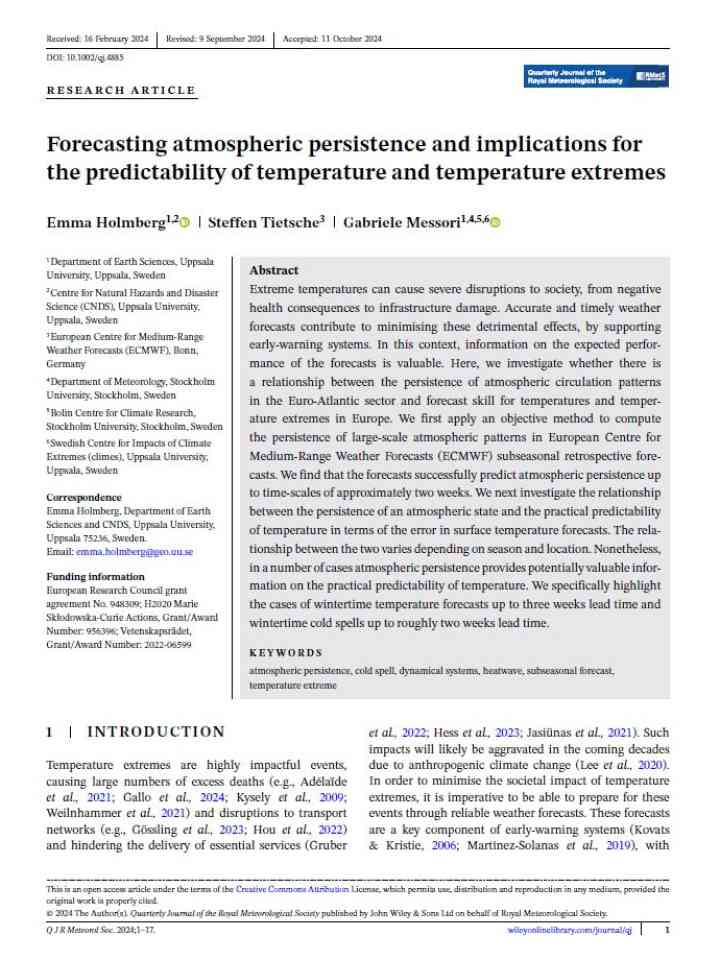Forecasting atmospheric persistence and implications for the predictability of temperature and temperature extremes
This study investigates whether there is a relationship between the persistence of atmospheric circulation patterns in the Euro-Atlantic sector and forecast skill for temperatures and temperature extremes in Europe. The authors first apply an objective method to compute the persistence of large-scale atmospheric patterns in European Centre for Medium-Range Weather Forecasts (ECMWF) subseasonal retrospective forecasts.
The researchers find that the forecasts successfully predict atmospheric persistence up to time-scales of approximately two weeks. They next investigate the relationship between the persistence of an atmospheric state and the practical predictability of temperature in terms of the error in surface temperature forecasts. The relationship between the two varies depending on season and location. Nonetheless, in a number of cases atmospheric persistence provides potentially valuable information on the practical predictability of temperature. The authors specifically highlight the cases of wintertime temperature forecasts up to three weeks lead time and wintertime cold spells up to roughly two weeks lead time.
Explore further
